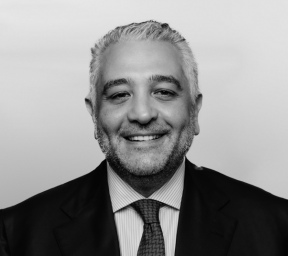The Middle East has built up high levels of bad debt since the jolt of the global financial crisis and then the COVID pandemic. But the complexities of regulation and culture have impeded recovery. Now, this is all changing as a combination of rising third-party investment and innovative cross-border asset tracing and recovery strategies open up more and more funds for recovery.
Drawing on the discussions from a Quantuma-hosted roundtable in London for lawyers and insolvency practitioners, Yaser Dajani outlines the latest developments and how to capitalize on the openings in this increasingly vibrant market.
Attracting more than 20 legal and insolvency practitioners from leading London firms, the discussions at our Middle East roundtable offered a clear testament to the pace of development and fast-rising interest in this market.
Key opportunities include the sale and recovery of funds tied up in non-performing loan (NPL) portfolios. Particular focus centers on the UAE, given the size of the economy and an NPL to GDP ratio that while falling, was still more than 6% at the end of 2022. By way of comparison, the UK’s NPL ratio is around 1%. Unlike the Gulf’s other economic giant, Saudi Arabia, where credit is governed by Sharia law and default rates are lower, the UAE has permitted relaxed lending practices and a variety of non-Sharia interest charging facilities.
Portfolio sale market opens up
In the past, many banks might have simply written off the debt. But recovery is now on the radar as third-party NPL portfolio investors and funders move into the market and banks are seeking to enhance profitability. The openings were highlighted by Abu Dhabi Commercial Bank’s (ADCB) 2022 sale of a $1 billion portfolio of SME loans to investment funds. In February 2023, ADCB sold another portfolio for $357 million. These sales increased the bank’s net profit by 23% in 2022.
And this is just the beginning. Recent experience suggests that around 50% and more of UAE debt could be monetized, though the repayment rates may be low in what are mainly toxic assets.
Some steps forward, some back
As encouraging as some of the sales are, the NPL landscape is still complex and evolving. Part of ADCB’s success stems from the fact that the assets were secured against recoverable collateral. However, a large proportion of the UAE’s other NPLs were backed by what are in effect worthless personal guarantees, rather than assets.
The UAE has complicated recovery still further by stipulating that any recoverable collateral needs to be specifically itemized in the loan agreement and applying the new regulations retrospectively. A decree was issued in January 2023 that lays out the guidelines to provide facilities and the nature of collateral that borrowers need to provide. The Central Bank is expected to hand down severe penalties for those who don’t comply in an effort to bring down the NPL ratio and improve the integrity of the banking system.
These recent rulings governing debt and insolvency in the UAE and elsewhere in the region offer progress on one front, but potential backward steps elsewhere. Moreover, even where the collateral has been itemized, the widespread dissipation of assets has put a fresh set of obstacles in the way of recovery.
Exploring cross-border options
So, does this mean that much of the UAE’s bad debt is off-limits? No. While the UAE is not a signatory to the United Nations Commission on International Trade Law (UNCRITAL) in relation to cross-border enforcement, there are examples of bilateral cooperation. One example is the bi-lateral treaty with India that allows for reciprocal enforcement of judgements obtained by either country in the other. This is significant as around two-thirds of UAE bank debtors are Indian nationals.
Beyond the bi-lateral agreement between the UAE and India, lenders have recourse to courts in other jurisdictions, notably the UK. Landmark cases include Emirates National Bank of Dubai’s (NBD) successful request to a UK court to recognize a UAE judgement for local enforcement against dissipated assets.
Looking at steps to combat dissipation more broadly, we have seen firsthand how much progress is being made in uncovering concealed assets. This includes the use of data-enabled forensic accounting techniques to follow the assets through complex international trails. In a recent case, we investigated and uncovered asset dissipation as part of our work in support of a worldwide freezing order. This included a fund flow analysis to trace the cash and prepare a timeline of the dissipation.
The investigatory armory is now being bolstered by cross-border strategies such as Norwich Pharmacal Orders, Chapter 15 applications, 1782 and other orders that are available in many jurisdictions around the world that have common law systems. These can help uncover details of bank accounts and assets from banks, auditors, and registered agents. Where appropriate, further openings include the use of insolvency mechanisms. Court-appointed liquidators can compel directors and third parties to provide critical information, which may identify wrongdoing and more importantly assets.
We will be looking more closely at the development of NPL markets and recovery strategies across the Middle East in a coming article.
Insolvency shifts offshore
Turning to the latest developments in insolvency and bankruptcy, the Middle East continues to provide a patchwork of fast-evolving but often confusing onshore legislation.
As the roundtable discussions highlighted, one way to cut through the onshore legislative complexity is to pursue proceedings through an offshore jurisdiction, principally the Dubai International Financial Centre (DIFC) that allows the execution of judgements within the onshore parts of the UAE. The DIFC has also created a Digital Economy Court, reflecting the increasing need to deal with complex disputes in the technology sector to include blockchain and crypto currencies.
We have also seen how the pursuit of insolvency cases through the international courts has helped to reveal and recover fraudulently appropriated funds. Notable successes include NMC Healthcare, through which creditors were able to secure a $2.25 billion arrangement as part of the restructuring process to clear their existing debt demands. The proceedings also allowed the business to come out of administration and continue operating as a going concern.
However, not all proceedings have been as successful. In a coming post, we will be exploring what works and what doesn’t in this evolving landscape.
Let’s talk
If you would like to discuss any of the issues raised in this article or how we can support debt recovery, please feel free to get in touch.
|
Yaser Dajani |













